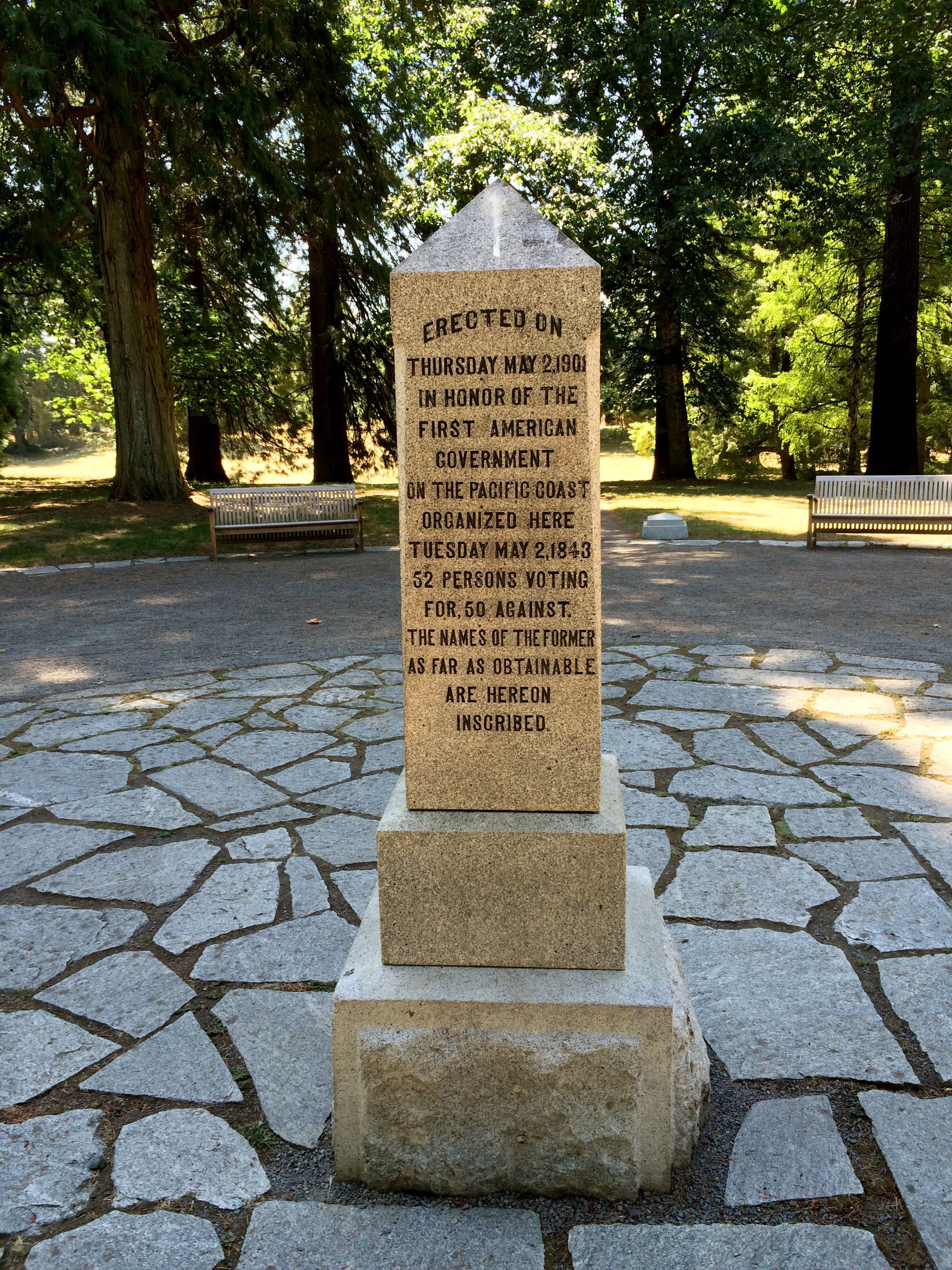Joseph Gale was a western explorer, trapper, settler, politician, and entrepreneur, and he was a member of the Oregon Provisional Government Executive Committee in 1843-1844, along with David Hill and Allison Beers.
Born in Washington, D.C., on April 29, 1807, Gale was educated and reared on Chesapeake Bay, where he became a skilled sailor. In about 1828, abandoning the sea, he ventured west and worked for the Rocky Mountain Fur Company. He was associated with such men as Jim Bridger, Ewing Young, David E. Jackson, Benjamin Bonneville, Joe Walker, Hall J. Kelley, and Nathaniel Wyeth.
While working out of Fort Hall, Gale married Eliza, a daughter of Tu-eka-kas (Tuekakas), a Nez Perce chief who was also known as Old Joseph. After the fur industry collapsed, he moved from Fort Hall to the Willamette Valley, where he farmed and became the master-builder, captain, and part owner in the construction of the first American seafaring vessel built in Oregon, the Star of Oregon.
On September 12, 1842, with Captain Gale at the helm, the schooner launched onto the Pacific Ocean, arriving in San Francisco five days later. Gale traded the vessel for 350 cows, and in 1843 he and forty-two others drove nearly five thousand head of livestock to Oregon, shattering Hudson’s Bay Company’s stock monopoly by providing affordable livestock to the settlers.
On July 5, 1843, Gale was popularly nominated to the first triumvirate executive committee of Oregon’s Provisional Government. He served in that position, with authority as commander-in-chief of the militia of Oregon Territory, until May 15, 1844. Many landmarks have been named in his honor, including Gales Creek, Gales Peak, the small town of Gales Creek, Joseph Gale Elementary School, and Joseph Gale Park in Forest Grove.
Gale farmed on Gales Creek and built the first gristmill and sawmill there. In 1848, he commissioned Alvin Smith, his friend and neighbor, to conduct his affairs and board his children—Ellen, Edward, Susan, and Margaret—who were attending the Tualatin Academy. He traveled to the gold fields in California with his wife Eliza and daughters Mary and Lavinia. With gold dust, Gale supported his children’s education and bought farming land near San Jose. In 1851, the older children reunited with their parents. The couple later had three more children—Sabina, Maria-Antonia Lucretia, and Clara.
In 1856, Gale contracted supplies to the army at Fort Tejon, California, established a sawmill, and raised livestock and hay. While living near the fort, the family suffered the effects of the January 9, 1857, Great Tejon earthquake when their home collapsed and Joseph Gale was injured while rescuing his family. They endured another tragedy when the Gales’s only son, Edward, was murdered.
Granted a ferry permit in August 1859, Gale managed the Kern River ferry and the Butterfield Stage Station and telegraph line until the stage route was abandoned and the catastrophic flood of 1861 and 1862 destroyed Gale's livelihood. The Gale family removed to Washington Territory in 1863. At Walla Walla, Joseph Gale homesteaded on Mill Creek, scouted under Captain Curry in 1864, and in 1865 led mining explorations.
Drawn to the mining district in eastern Oregon in 1867, the Gale family settled in Eagle Valley, now in Baker County. Gale homesteaded along Eagle Creek, where he raised produce. He engaged the first New Bridge schoolteacher in 1872, built the first frame house in 1874, and reared five orphaned grandchildren. In 1877, he was appointed the first postmaster of the community and he officially named the post office New Bridge. At his urging, Eagle Valley was surveyed in August 1880. In his later years, he championed for the rights of Native Americans and wrote poems, letters, manuscripts, and articles that were published in Northwest newspapers.
Joseph Gale died at his home on December 13, 1881. He is buried in the Eagle Valley Cemetery in Richland. In 1882, Eliza Gale moved from Eagle Valley to the Umatilla Indian Reservation. She died on March 30, 1905, and is buried in the Weston Cemetery in Umatilla County.
-
![]()
Provisional Government Memorial, Champoeg State Heritage Area, 2016.
Courtesy A.E. Platt
-
![]()
Monument to first provisional government, Champoeg, c.1910.
Courtesy Oregon Hist. Soc. Research Lib., 003000
Map This on the Oregon History WayFinder
The Oregon History Wayfinder is an interactive map that identifies significant places, people, and events in Oregon history.
Further Reading
Collins, Dean. Stars of Oregon, Oregon Journal Edition. Portland, Ore.: Binfords and Mort, 1943.
Densley, Lillian C. and Aaron G. Governor Joseph Gale and His Indian First Lady. Baker City, Ore.: Snake River Secrets Publishing Company, 2010.
Hafen, LeRoy, ed. The Mountain Men and the Fur Trade of the Far West, Biographical sketches of the participants by scholars of the subject and with introductions by the editor, vol. 7. Glendale, Calif.: A. H. Clark Company, 1969.


